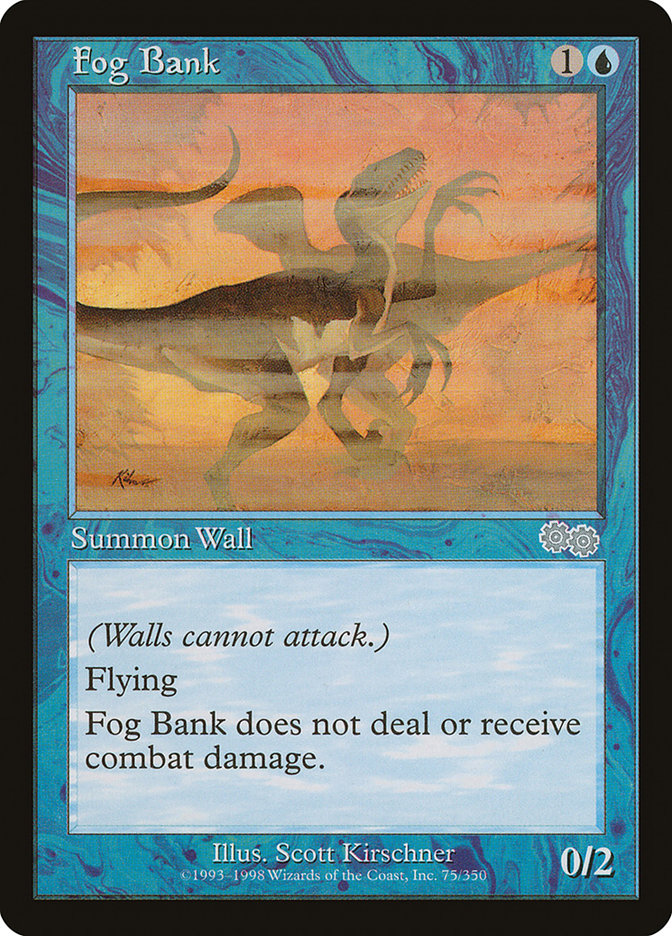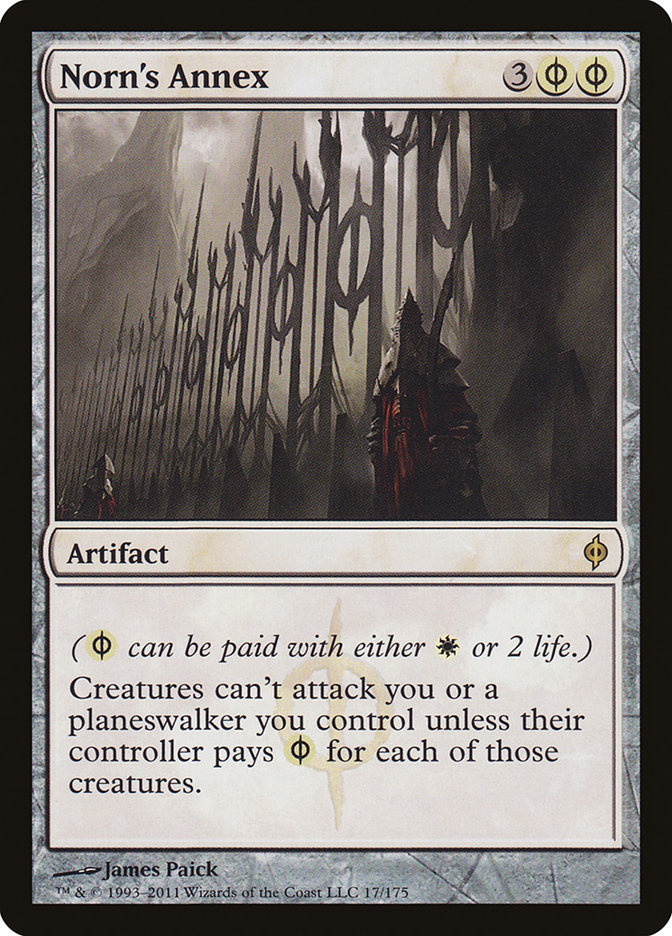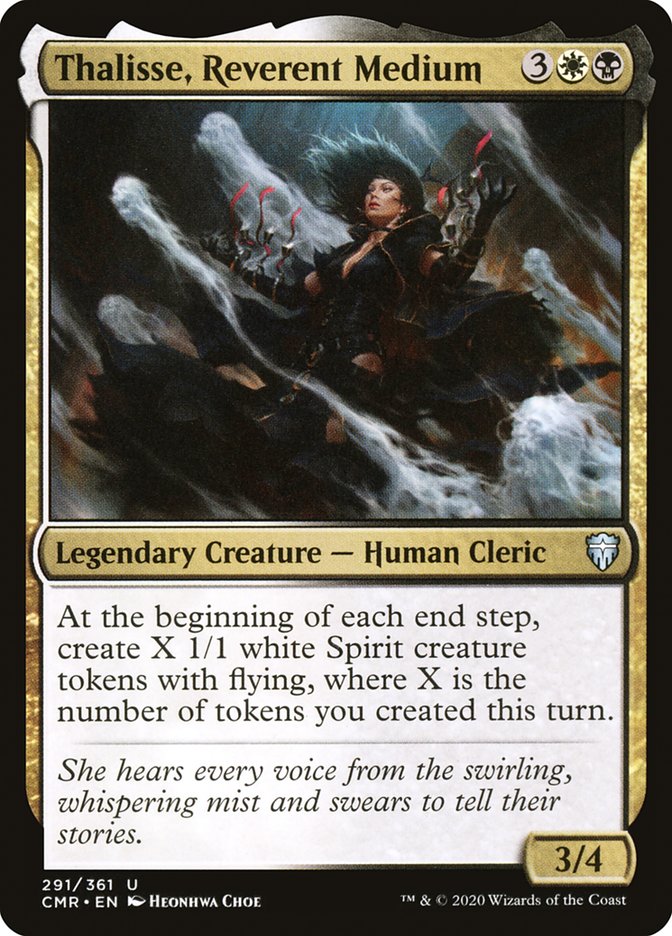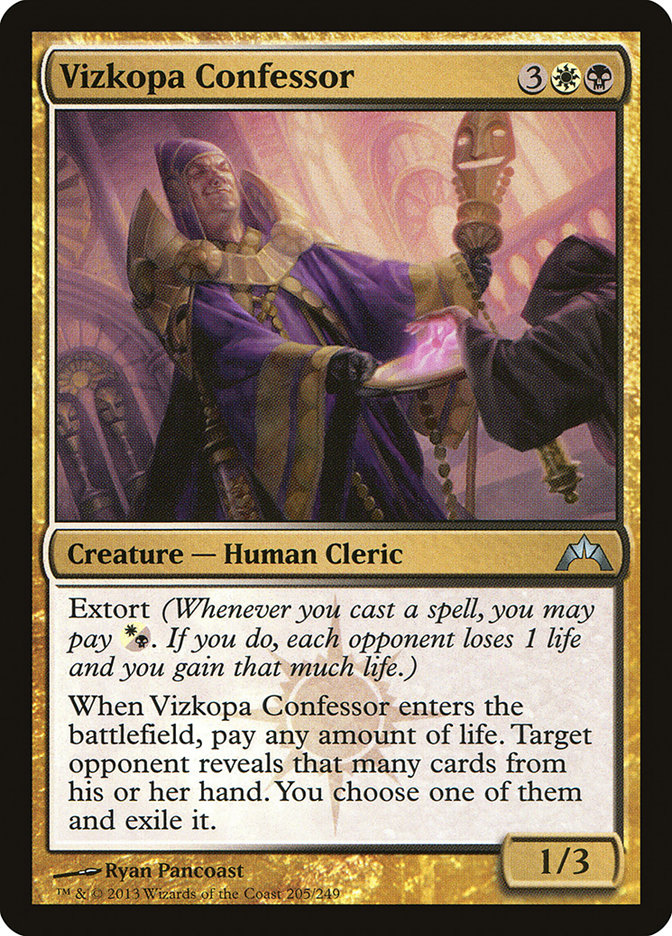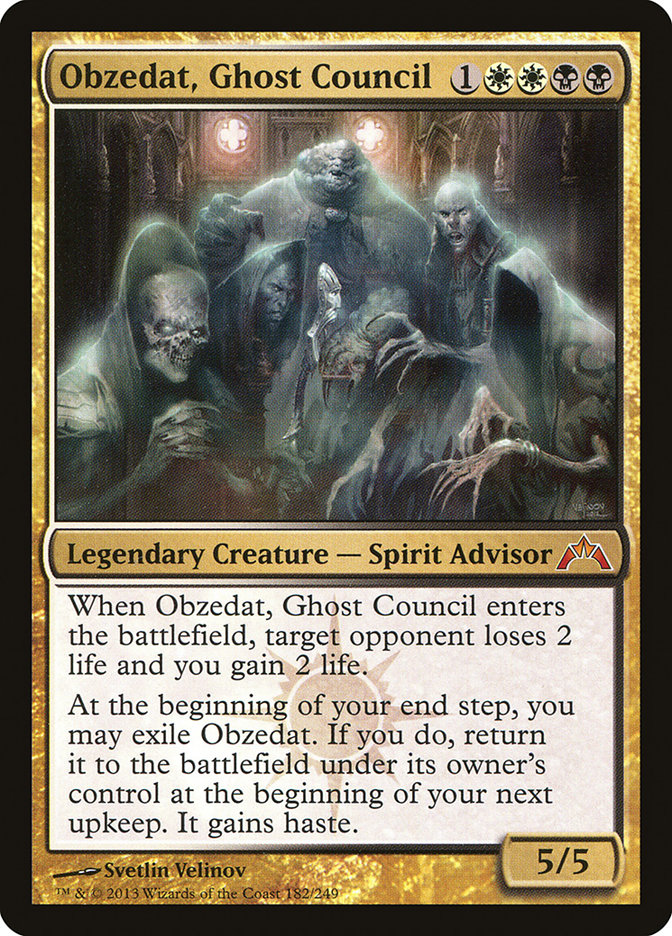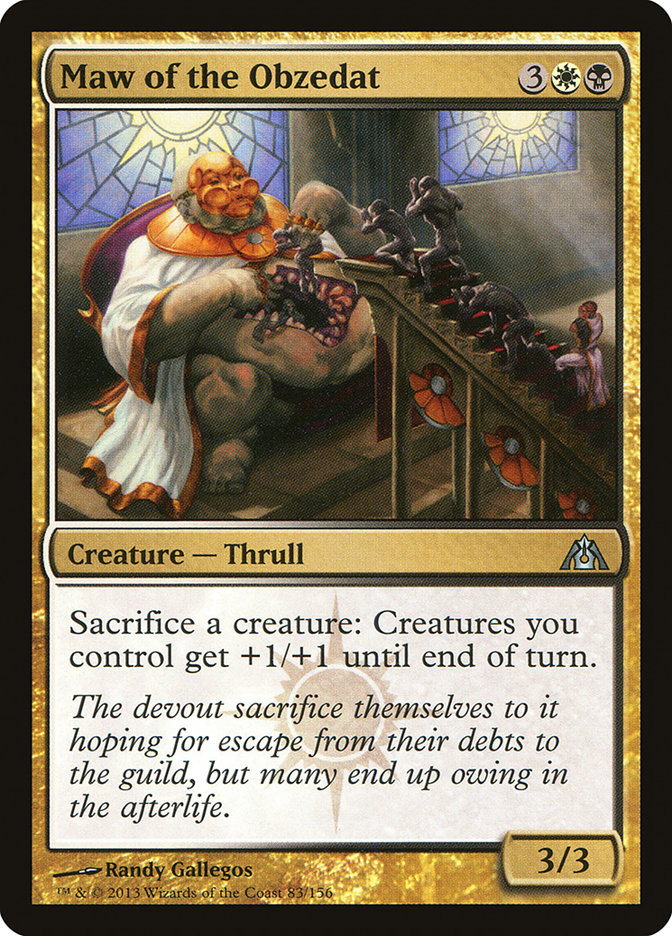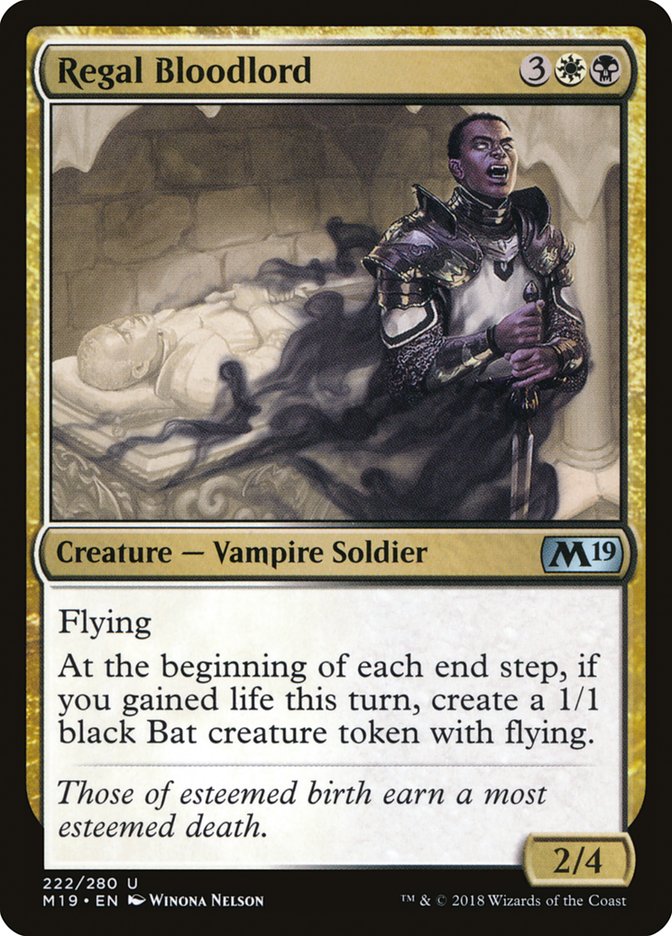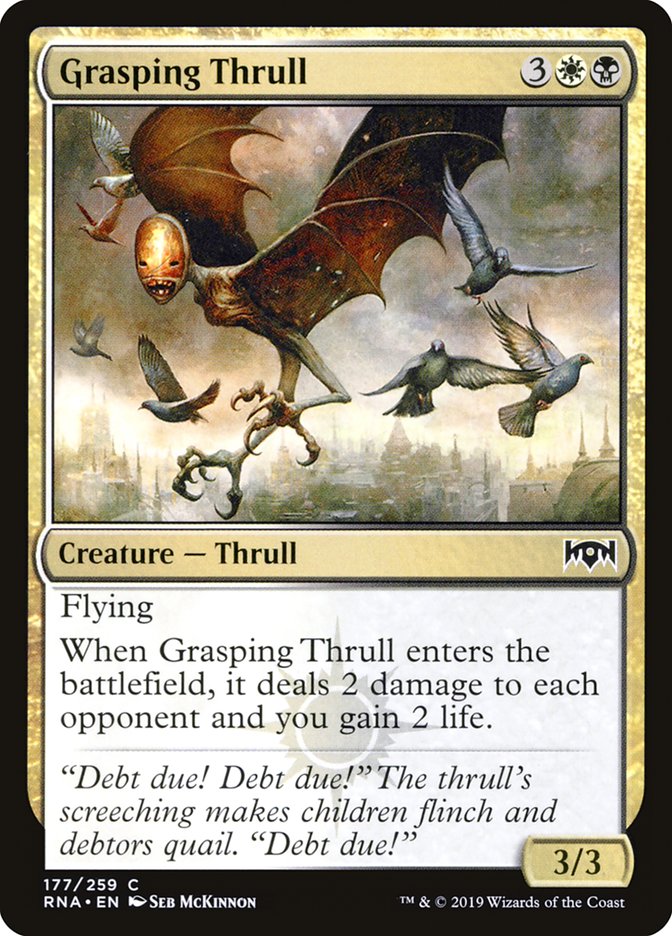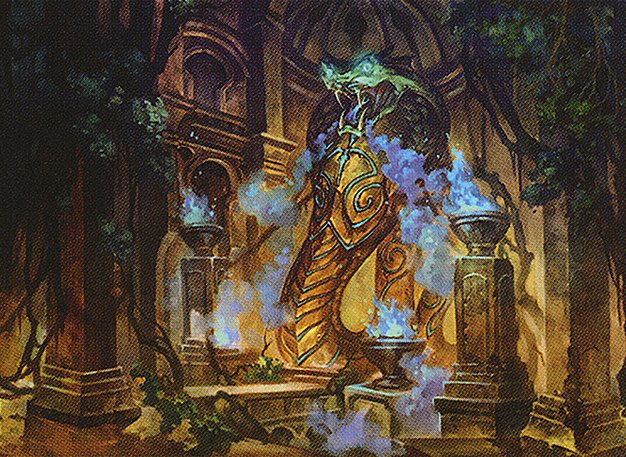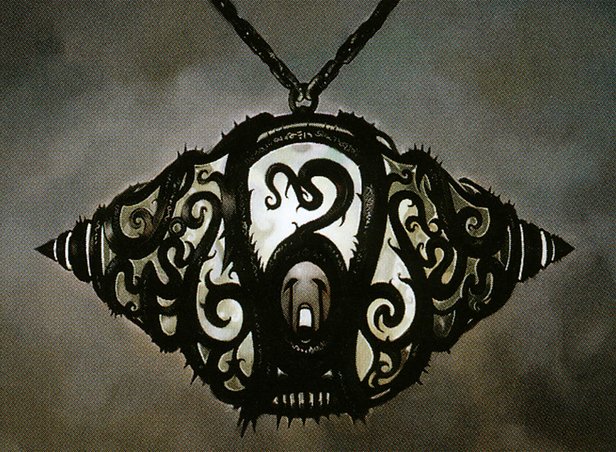Revenant Patriarch MTG Card
| Card sets | Released in 2 setsSee all |
| Mana cost | |
| Converted mana cost | 5 |
| Rarity | Uncommon |
| Type | Creature — Spirit |
| Power | 4 |
| Toughness | 3 |
Key Takeaways
- Revenant Patriarch offers indirect card advantage by disrupting opponents’ aggro strategies and plans.
- It aligns well with decks aiming for a robust midrange presence and streamlines mana curves.
- Strategic casting of Patriarch is key, providing momentum shifts comparable to instant speed interactions.
Text of card
When Revenant Patriarch comes into play, if was spent to play Revenant Patriarch, target player skips his or her next combat phase. Revenant Patriarch can't block.
"The Golgari raise the bodies of their dead to serve. We raise the spirits of our dead to lead."
Card Pros
Card Advantage: Revenant Patriarch has the potential to be more than just a creature on the field. With its ability that prevents a target player from attacking during their next turn, it can be a form of indirect card advantage. This can disrupt an opponent’s plans, effectively countering an aggro strategy without losing card resources.
Resource Acceleration: While the Revenant Patriarch doesn’t directly accelerate resources in the traditional mana-generating sense, being a four-mana spirit creature means it can promptly impact the board. It fits well in decks that aim to streamline their mana curve with impactful midrange creatures.
Instant Speed: The Patriarch doesn’t operate at instant speed, but it’s crucial to strategize around this card effectively. It shines when cast strategically in response to an opponent gearing up for a big attack, providing a shift in momentum that can be as valuable as instant speed interaction in the right circumstances.
Card Cons
Discard Requirement: When playing Revenant Patriarch, you’re prompted to discard another card unless a creature died this turn. For decks that rely on maintaining card advantage, this can lead to a decline in hand quality, especially if you lack alternative ways to fill your hand back up.
Specific Mana Cost: It demands a mana combination of one white and two black to cast. This requirement often makes it less flexible for multicolored decks that aren’t centered around these colors, potentially limiting its inclusion to strictly Orzhov or similar color-pie decks.
Comparatively High Mana Cost: Although its mana cost of three is not exceptionally high, when considering the effect of preventing damage from black creatures, it might be inadequate compared to other white or black creatures that provide more impactful board presence or defensive capabilities for the same or lower cost.
Reasons to Include Revenant Patriarch in Your Collection
Versatility: Revenant Patriarch serves as a multifaceted tool, seamlessly slotting into decks that focus on controlling the battlefield. Its ability to prevent a player’s creatures from attacking the turn it’s played adds a layer of protection often needed in black-based control strategies.
Combo Potential: This ghostly figure can be a linchpin in various combo decks, working wonders with graveyard mechanics. It becomes a recurring nightmare for opponents when paired with ways to continually return it from the graveyard to the battlefield, acting as a repeatable shield against incoming attacks.
Meta-Relevance: In a meta teeming with aggressive strategies, Revenant Patriarch proves its worth by stalling opponents’ onslaughts effectively. Its presence on the field can be a decisive factor in outlasting opponents and stabilizing until stronger win conditions can be deployed.
How to beat
The Revenant Patriarch presents a unique challenge in MTG games – its ability to prevent creatures from attacking the turn it enters the battlefield makes it an effective stalling tactic. This ghostly creature card creates strategic defensive opportunities, especially against decks that hinge on early creature assaults.
To navigate around the Revenant Patriarch’s ability, counterplay strategies can be incredibly effective. Consider using removal spells that can target the Patriarch regardless of its protection from white. Cards like Doom Blade or Murder come to mind, which can dispatch this spirit without triggering its combat negation. Alternatively, playing non-creature sources of damage or utilizing abilities that don’t involve attacking can circumvent the roadblock it presents. Leveraging blue’s penchant for countering spells or red’s direct damage spells are also reliable methods to keep the board clear of the Patriarch.
Successfully overcoming the Revenant Patriarch requires a blend of timing and resource allocation. Understanding when to hold back or apply pressure is essential when this card is in play. In essence, adapting your strategy to handle the tactical pause it imposes will ensure it doesn’t haunt your chances of clinching victory.
Cards like Revenant Patriarch
Revenant Patriarch serves as a notable creature card that deserves a spotlight among its peers in Magic: The Gathering. It echoes the defensive capabilities seen in cards like Fog Bank, renowned for its ability to halt enemy attackers without suffering damage in return. Revenant Patriarch stands out, however, through its proactive ability to prevent a creature from attacking on the turn it’s cast—a twist not seen in the passive nature of Fog Bank.
Delving into other comparisons, we might also look at Norn’s Annex which involves a strategic imposition of costs on opponents who wish to attack. The Patriarch bypasses the cost imposition with a direct prevention strategy. Another ghostly counterpart, the Ghostly Prison card, manipulates the attacking dynamic by making attacks more resource-demanding for the opponent. While both have a role in controlling combat phases, Revenant Patriarch provides an immediate, albeit singular, impact upon entry.
Ultimately, when evaluating Revenant Patriarch in the lineup of defensive creature cards in MTG, it shines with its unique twist on combat control. Its influence on battlefield engagements can sway the tide, marking its spot in the tactical arsenals of many players.
Cards similar to Revenant Patriarch by color, type and mana cost
Where to buy
If you're looking to purchase Revenant Patriarch MTG card by a specific set like Guildpact and Duel Decks: Sorin vs. Tibalt, there are several reliable options to consider. One of the primary sources is your local game store, where you can often find booster packs, individual cards, and preconstructed decks from current and some past sets. They often offer the added benefit of a community where you can trade with other players.
For a broader inventory, particularly of older sets, online marketplaces like TCGPlayer, Card Kingdom and Card Market offer extensive selections and allow you to search for cards from specific sets. Larger e-commerce platforms like eBay and Amazon also have listings from various sellers, which can be a good place to look for sealed product and rare finds.
Additionally, Magic’s official site often has a store locator and retailer lists for finding Wizards of the Coast licensed products. Remember to check for authenticity and the condition of the cards when purchasing, especially from individual sellers on larger marketplaces.
Below is a list of some store websites where you can buy the Revenant Patriarch and other MTG cards:
- eBay
- TCG Player
- Card Kingdom
- Card Market
- Star City Games
- CoolStuffInc
- MTG Mint Card
- Hareruya
- Troll and Toad
- ABU Games
- Card Hoarder Magic Online
- MTGO Traders Magic Online
See MTG Products
Printings
The Revenant Patriarch Magic the Gathering card was released in 2 different sets between 2006-02-03 and 2013-03-15. Illustrated by Nick Percival.
| # | Released | Name | Code | Symbol | Number | Frame | Layout | Border | Artist |
|---|---|---|---|---|---|---|---|---|---|
| 1 | 2006-02-03 | Guildpact | GPT | 59 | 2003 | Normal | Black | Nick Percival | |
| 2 | 2013-03-15 | Duel Decks: Sorin vs. Tibalt | DDK | 16 | 2003 | Normal | Black | Nick Percival |
Legalities
Magic the Gathering formats where Revenant Patriarch has restrictions
| Format | Legality |
|---|---|
| Commander | Legal |
| Legacy | Legal |
| Paupercommander | Restricted |
| Modern | Legal |
| Oathbreaker | Legal |
| Vintage | Legal |
| Duel | Legal |
| Predh | Legal |
| Penny | Legal |


